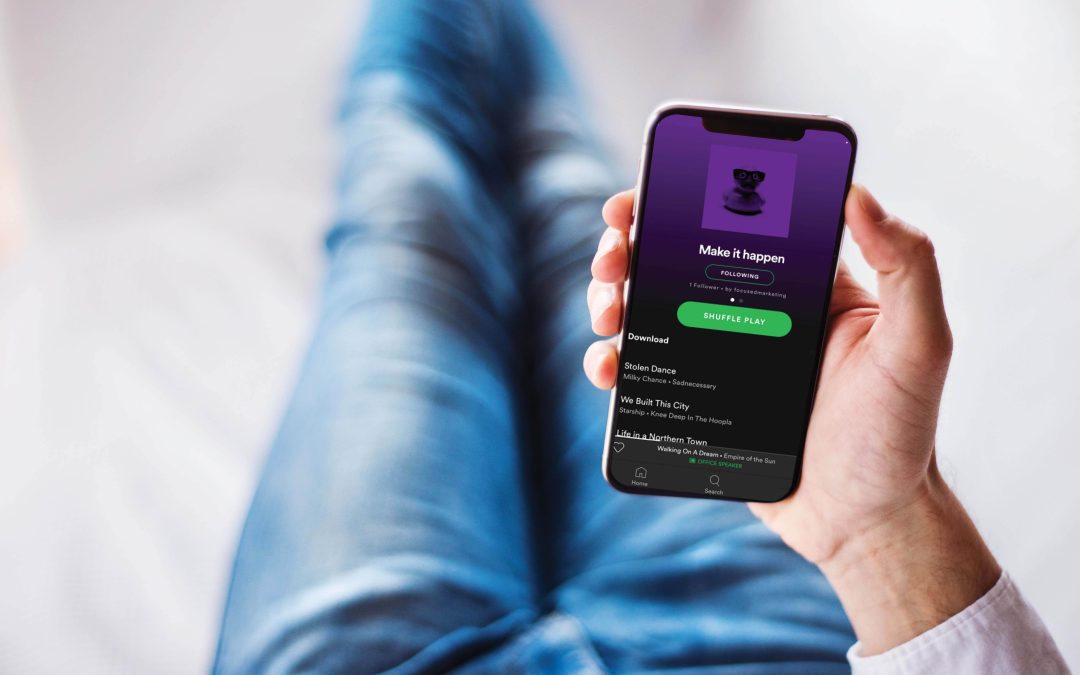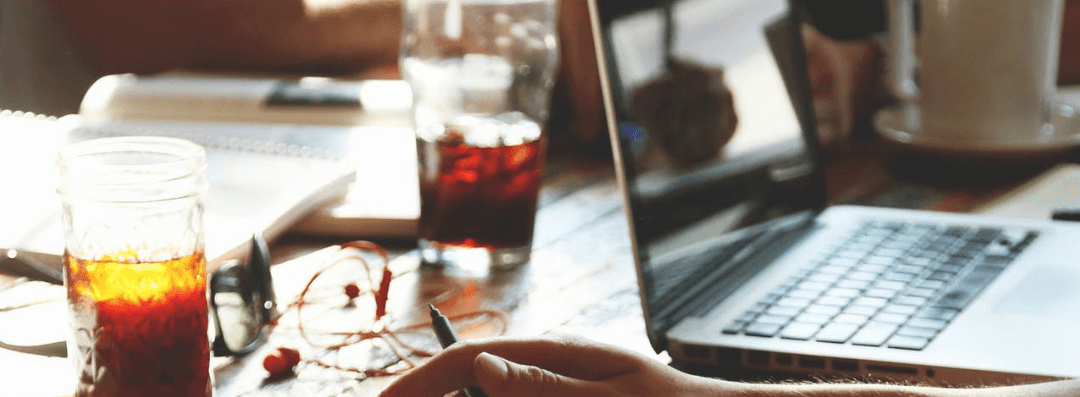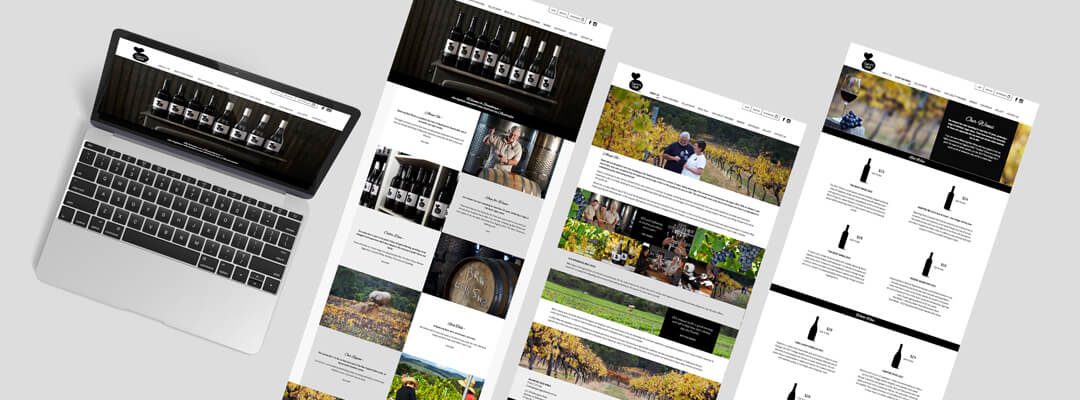
by fmadmin | Aug 23, 2019 | Uncategorised
Having a strong personal brand is a part of life, whether you are aware of it or not – and it’s important! It’s something that needs to be consciously developed as ultimately, it is defining the image you are projecting.
Are you a Lawyer? Builder? Nurse? Photographer? It doesn’t matter who you are or what you do, if you want to make your mark and be recognised in your field – or perhaps be better understood – you need to understand and develop your own personal brand.
Think social media presence, marketing and sales techniques, your work, passion, talents, personality and everything in between all rolled into one package. Yep! That’s YOU. That’s your brand and when marketing yourself, there are some important factors to consider:
Your audience:
The focus of your marketing must always be your audience. Ask yourself “What are their needs? How can I help them?” Sure, you could take a guess, but that’s risky.
An ideal way is to conduct a survey. Ask a few specific questions to uncover your demographic and find out exactly who wants to engage with you.
Yourself:
People want to connect with people. They want to see the face behind the name or the business. Are you presenting a great photo of yourself that helps establish credibility and builds trust? Have you got a great headshot that captures the real, authentic you?
Invest in a professional photo shoot, or, if you don’t have the budget, find a friend with a good quality camera and some basic photographic skills. Just a simple headshot of you looking into the lens, smiling, appearing approachable and friendly is all you need for your website and social media networks.
There are other options if you feel uncomfortable standing in front of the camera. How about a photo of you:
- Working at your computer
- Facilitating a workshop
- Taking photographs of your clients
- Speaking before a crowd
You get the idea…
Your value proposition:
What have you got to offer your audience? What will they get from investing their time or money listening to you, reading your content, or utilising your services? Do you offer resources to help them work smarter? To look or feel better? Do you offer personal insights and tips? Or perhaps you offer an escape from reality with your skills/talents?
Create a clear and simple answer and you will have your own personal value proposition. You may have to experiment and revise it from time to time, but this value proposition will become the basic framework of who you are and what you do.
Your brand slogan:
Think of all the white noise and constant chatter in the media today. Think of all the hashtags, headlines and click-bait out there that – try as you might to ignore it – constantly grabs your attention. Recognise how critical it is to quickly make a strong impression. A great way to do this is to refine your value proposition into one concise slogan.
Know – and show – your style:
Any memorable brand – your personal brand included – should be consistent. Try not to confuse your audience. Develop a look for your personal brand in all marketing material with:
- A professionally designed logo that says something about you/your business
- A colour palette reflecting your personal style
- Consistent use of fonts
Apply similar standards to everything you create: your website, business cards, advertising etc. But most of all, know who YOU are and how your packaging (the cover of your book) reflects the story you are trying to tell and what you are hoping to achieve.

by fmadmin | Aug 23, 2019 | Uncategorised
From the drumbeats of our ancient ancestors to today’s unlimited streaming services, music is an integral part of the human experience. There is a song for every mood, every activity, every situation and finding these songs and curated playlists is now as easy as ever.
On Spotify’s homepage you can pick your playlist based on whether you want:
· “Songs to sing in the car” or songs which give you that “warm fuzzy feeling”.
· Your mood, whether that be “feeling good” or “life sucks”.
· Or even to help you focus and “apply yourself”.
It’s no secret that music can alter your mood and change the way you feel… so why aren’t we using music in our marketing tactics to engage with our consumers on that emotional level?
Music streaming (Spotify in particular) and the use of playlists generally skew toward a younger audience. Almost 80% of millennials and 76% of adults ages 35-44 currently say they use streaming services to access music. With streaming services on the rise and traditional radio and music sales on the decline, there is so much untapped marketing potential. When you think about advertising on music services you traditionally think of having a message, making it pretty, then placing it in front of your target audience. This gets your message out there, but does it actually stick? Or are people ignoring it?
Curated playlists are similar to native advertising; they’re a subset of branded entertainment. Brands are aiming to connect with consumers on a more individual level and more specifically, the emotional moments in life when someone will listen to music. These contextual playlists can help shift brand perception as well as associate a brand with a certain behaviour. You’re able to create a playlist to “show the world what kind of music your brand likes to listen to while studying, driving, or enjoying a cup of coffee.”
For example, Starbucks curated a playlist for the morning commutes, where consumers can listen in the morning on their way to work. The next time someone hears one of the included songs, they’ll wonder why they are suddenly craving a Frappuccino…
Another great example is Herbal Essences. They pushed the envelope and took advantage of a moment that most people are guilty of – singing in the shower – by making a playlist for it. This was a great way to get customers to not only interact with Herbal Essences, but to also directly relate their brand to a specific experience.
While creating the perfect branded playlists may take some time to perfect, they are an extremely effective way to reach music streamers and by providing your customers with a sweet playlist that they can jam to on their way to work or sing to in the shower, you’ll guarantee your brand a spot in their minds.
The Takeaways:
· Create a playlist that captures your brand’s identity.
· Your playlist should be for moods or activities that your target audience relates to.
· Get the word out! Make sure you share your playlist on social media and in blog posts.
Practice what you preach… Here at Focused Marketing we’ve created a playlist that is full of feel good songs to help your get your creative juices flowing and “make it happen”.

by fmadmin | Aug 23, 2019 | Uncategorised
Whether it is for a new project or to replace an exiting employee, every time you need to recruit you can spend weeks or months managing the recruitment process. Regardless if the person is a new marketing officer or communications manager, digital or online guru, PR or media lead, creative brand specialist or design artist, the time and resource expenditure can be prohibitive, especially for a small-medium business. Recruitment agencies cost money and the time associated with the recruitment of a strategic internal role can be excessive. To recruit, train and resource an individual can take up to six months.
It’s not just the placement. Time and expense include provision of workplace tools, phones or cars, tablets or laptops, uniforms, super, PAYG. Hiring a mid-range employee can set you back more than $100,000, just to get them in the door, invest in training and get them job ready for your organisation.
In a market where more and more people are working as freelance consultants or as part of small, disruptive and collaborative agency types, we see the opportunities for business to get out of the traditional hiring mode. Consider bringing on a boutique agency – this has a myriad of benefits.
Firstly, you are not paying tax and super, a big saving of around $30,000 pa on a $100,000 salary. That means you can engage the right agency or flexible talent for around $60,000 – $70,000 and you don’t have to consider going through a termination process if it doesn’t work. Small agencies and collaborative workforces are easier to hire and easier to move on if the business circumstances change, project deliverables and timelines blow out or are no longer viable. Or if the agency can’t deliver results, it allows you to change.
You can control the spend with a flexible workforce. Rather than going through a timely and costly process of recruiting an employee, you have the chance to have agencies or individuals pitch for your work. Creating a tender opportunity to find the right people allows you to control and manage your needs and expectations.
To break it down to simple economics, you can have a small, boutique agency for the cost of one employee! Small agencies have a variety of specialists (think communications, marketing, strategy, brand, design or administration) and for a reasonable retainer, you get the added value of three, six or even ten brains for the cost of hiring one employee. Agency teams work collaboratively on projects and give you more ideas.
Mid-range monthly retainers sit between $5,000 – $8,000 a month, depending on the needs and workload, and the agency or consultant you recruit. Over 12 months, this costs up to around $95,000 and you get several experienced heads on the project, rather than one. All for about the same cost as a single employee. Imagine having five times the thinking power on an idea or an activity hitting the ground running on day one.
Smaller agencies and flexible talent are also generally more skilled, especially in the areas of social and digital, communications, media engagement, PR, marketing, branding and creative, just to name a few. You ultimately get better experienced people driving your output.
They also have networks who can assist them in getting work done. If there is a project that requires a specific area of experience or skill they don’t possess, chances are they have a subcontractor who can assist in getting the task completed. They generally work with their own equipment and software, meaning you spend less getting them job ready. They come fully loaded and ready to go.
Finally, you don’t have to find them a desk. Usually, consultants and agency teams work from an office where they are used to managing their time and output to be the most efficient. Meetings and WIP appointments can be managed electronically, whether using Skype, FaceTime, Google Hangouts or other similar tools. Work can be tracked using a variety of online tools, so you know the job is getting done. Get them in a day a week, or a few days a month. Bring them in to meetings with online tools via the web – it’s that simple and saves you considerable time and money.
Instead of spending your valuable time, energy and money recruiting someone who may still not be the right fit, think about hiring an agency or consultant. It will save you money in the long run.
Call us and ask how we can save you time and money.

by fmadmin | Aug 23, 2019 | Uncategorised
From the moment he presented himself as a candidate, US President Donald Trump has shouted about ‘Fake News’. Does it exist and what drives it?
2019 is the first year where digital marketing spend will outpace other traditional channels in broadcast and print. We know the value of digital marketing, but it is far more likely fake news can be spread very easily in the realm of social and digital media than ever before. Businesses focusing on digital communications can now compete with those who spend and spend big in the old world.
Where do you spend, how much and with so many options, where are the best places to invest your marketing and communications budget? Public Relations is as vital and valuable as ever, even though fake news is eroding our trust in the media. We have recently witnessed some of Australia’s biggest spending brands disassociate themselves with Alan Jones’ radio program and Macquarie Media because of his comments about NZ Prime Minister Jacinda Ardern. Driven by a number of groups on Twitter and Facebook, the exodus of these brands has caused the industry to sit up and take notice. Where once shock jocks could get away with saying what they pleased, they are now being called to account and challenged on fake news by people power.
A report from the University of Canberra’s News and Media Research Centre outlines some alarming statistics about our trust in the news sector. 62% of Australian news consumers say they are worried about what is real or fake on the internet, which is much higher than the global average (55%). Furthermore, consumers say news articles are the most impactful in shaping their buying decisions.
The proportion of Australians avoiding news has increased from 57% in 2017 to 62% in 2019, and 28% say they are worn out by the volume of news. 88% of those who are worn out by news, also avoid it. Many of us have turned to fact checking so we can filter out what is fake and what is real.
The proliferation of digital news organisations has meant fake news travels faster and has better reach than earned media. This means digital news is driving awareness and purchasing behaviour of consumers while, at the same time, creating further distrust in the digital channels. A recent study from US based marketing agency BMV suggests half of consumers say fake news is mostly likely to appear first and spread from social media sites.
Is it all swings and roundabouts? Is social media spreading fake news or is it calling to account those whose actions don’t pass the public perception of ethical behaviour. It does both, which is why the value of earned media remains a key driver.
Earned media remains the most trusted place for news and cultivating earned opportunities and business should continue to use agencies like Focused Marketing to support them in gaining valuable column inches and on- air time. While considerable resources are spent engaging influencers and digitally savvy consumers, nothing beats seeing your message in print or on radio and TV news.
We can help you understand the news worthiness of your content and curate earned media opportunities. While fake news will never be a thing of the past, it shouldn’t impact your future and the trust you seek from your customers.

by fmadmin | Aug 23, 2018 | Uncategorised
They say a picture is worth a thousand words. And they are right.
There is no doubt imagery is one of the most important parts of your brand. Strong imagery instantly engages, it sets the tone for your messaging and makes a visual statement about who you are as a business.
This is exactly why we often recommend our clients invest in a custom photoshoot.
We truly believe the money spent creating your own images is one of the best investments you can make in your business. Yes, a custom photo shoot will cost you more than buying stock images, but the outcome is also far superior. It takes your brand up a level and sets you apart from your competitors.
A custom photoshoot allows you to tell your own unique story as a business. The lighting, setting and mood will be consistent across all photos. With stock images you are always trying to find something to fit your look and feel.
Let me share an example that highlights just how much value can be gained from a custom photoshoot.
Our client, Balancing Rock Wines, had a unique story to tell. The brand’s founders gave up their successful, full-time jobs to live their dream. They purchased a fabulous, premium vineyard with huge potential in Stanthorpe – the heart of the Queensland’s Granite Belt.
They wanted to build a website with beautiful imagery, to not only sell their wines but to tell their unique story and share their love and passion of wine with the world.
They knew the key to helping people connect with their story was to show the detail and beauty of a working vineyard. A custom photoshoot was the answer.
I drove down from Brisbane to Stanthorpe with the photographer to Art Direct the photoshoot. Coming from Canada, this was my first visit to the Granite Belt.
I had visualised the images we wanted to display on the website in advance. I had no idea when we got there that none of those photo layouts would work. There was a completely different story to tell. The landscape, the cellar door, the climate, the vineyard, the owners themselves – David and Lori. There would not be any stock images that could tell this unique story.
We worked on this photoshoot for 10 hours a day, two days straight. I had to keep in mind the photos needed to be framed so they could be used across various applications such as print, web, social media, apps, signage, and advertising.
I love working with talented photographers who understand what designers want to achieve with design, mood, sorry telling and layout. The photographer I worked with was very talented and an absolute pleasure to work with. This allowed me to design the website so there was a lot of white space and the photos would tell the story of David and Lori’s passion for the vineyard.

David and Lori opened the cells doors in 2016 and won over 8 awards in less than two years after launching. As a designer this has been one of my favourite projects to work on. I got to be part of David and Lori’s dream for a little while from designing their logo, business cards, wine labels, art directing their photography and designing their web site. It was my dream project to work on.
A quick visit to Balancing Rock’s website will show you exactly why a custom photoshoot is worth the extra effort and expense. Oh…and their wines are pretty delicious too!






